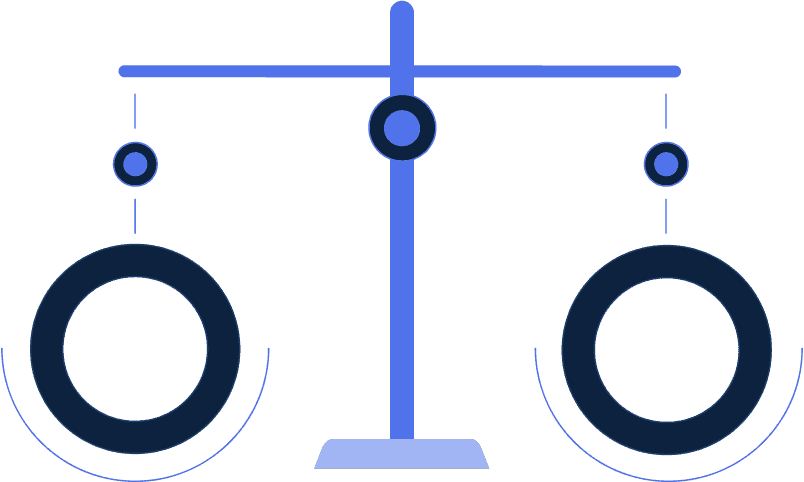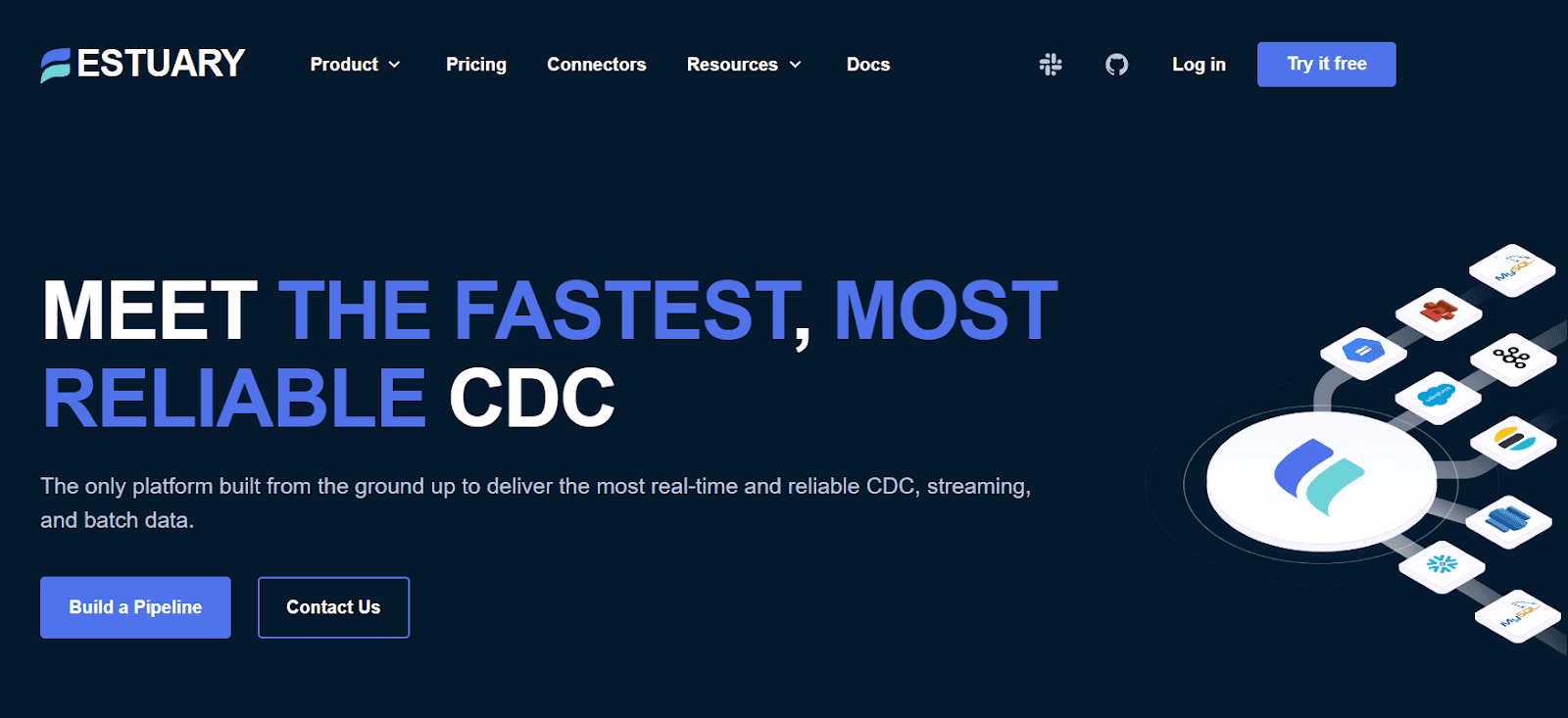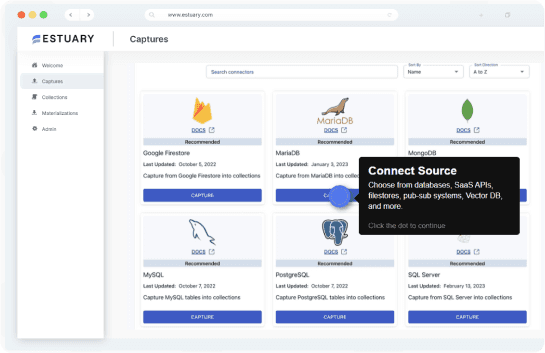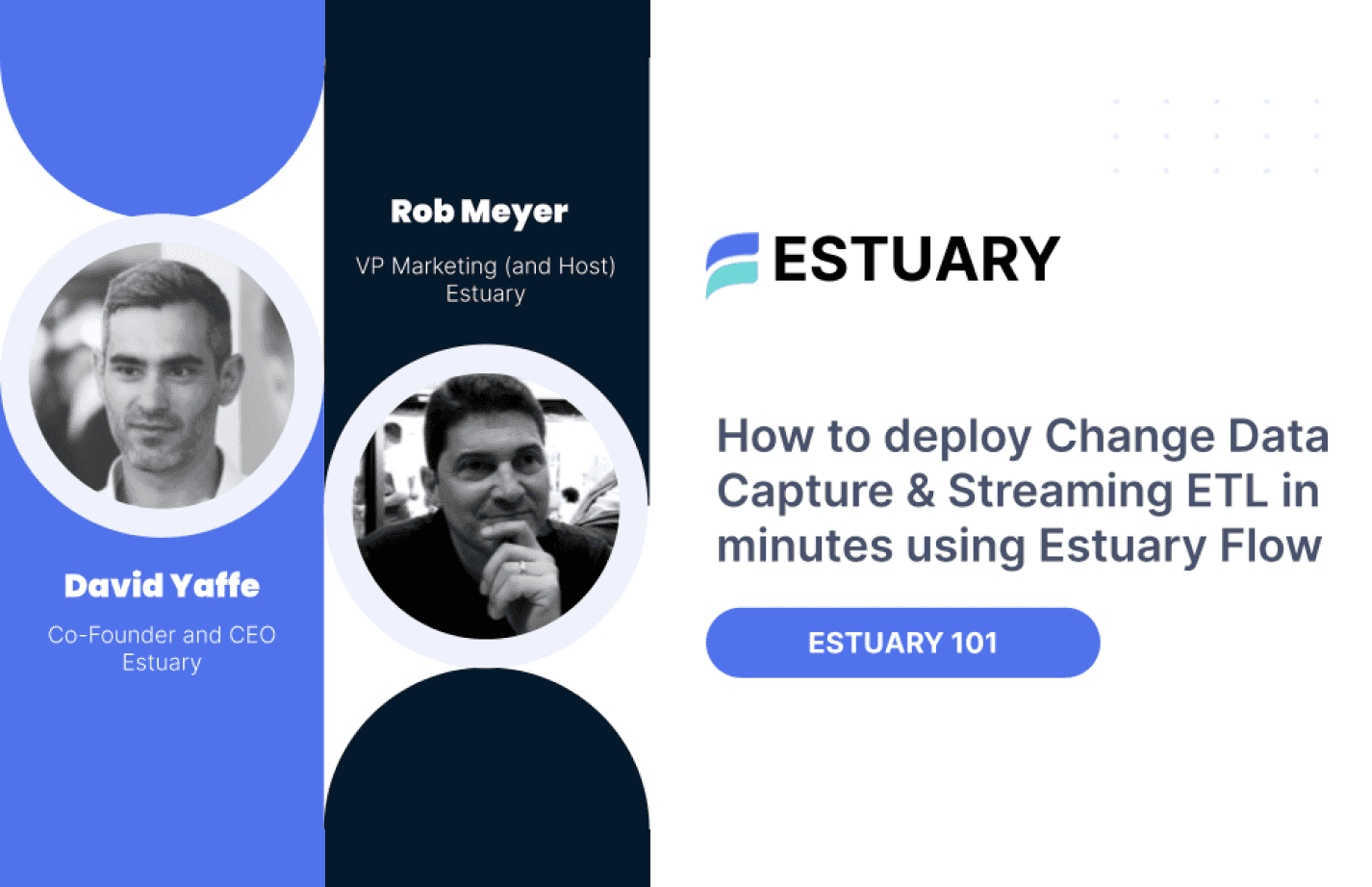Airbyte VS Matillion
Read this detailed 2025 comparison of Airbyte vs Matillion. Understand their key differences, core features, and pricing to choose the right platform for your data integration needs.
View all comparisons


Introduction
Do you need to load a cloud data warehouse? Synchronize data in real-time across apps or databases? Support real-time analytics? Use generative AI?
This guide is designed to help you compare Airbyte vs Matillion across nearly 40 criteria for these use cases and more, and choose the best option for you based on your current and future needs.
Comparison Matrix: Airbyte vs Matillion vs Estuary
 |  |  | |||||||||||||||||||||||||||||||||||||||||||||||||||||
|---|---|---|---|---|---|---|---|---|---|---|---|---|---|---|---|---|---|---|---|---|---|---|---|---|---|---|---|---|---|---|---|---|---|---|---|---|---|---|---|---|---|---|---|---|---|---|---|---|---|---|---|---|---|---|---|
| |||||||||||||||||||||||||||||||||||||||||||||||||||||||
| |||||||||||||||||||||||||||||||||||||||||||||||||||||||
| |||||||||||||||||||||||||||||||||||||||||||||||||||||||
| |||||||||||||||||||||||||||||||||||||||||||||||||||||||
| |||||||||||||||||||||||||||||||||||||||||||||||||||||||
| |||||||||||||||||||||||||||||||||||||||||||||||||||||||

Airbyte

Airbyte was founded in 2020 as an open-source data integration company, and launched its cloud service in 2022.
Airbyte started as a Singer-based ELT tool, but has since changed their protocol and connectors to be different. Airbyte has kept Singer compatibility so that it can support Singer taps as needed. Airbyte has also kept many of the same principles, including being batch-based. This is eventually where Airbyte’s limitations come from as well.
If you go by pricing calculators and customers, Airbyte is the second-lowest-cost vendor in the evaluation after Estuary.
Pros
- Ease of use: Airbyte is an easy-to-use (harder to operate), modern ELT product.
- Open source: Airbyte is open source, which means you can self-host. In addition, open source has fewer limits, such as being able to run more frequent batch intervals.
- Low cost: Airbyte Cloud is one of the lowest-cost options for batch ETL.
- Widely used: Even though Airbyte is only 4 years old, it is widely used. Most of the customers use the open-source version. The official 1.0 product launch, the big milestone for any open-source project, was September, 2024.
Cons
- Only 50+ managed connectors: While Airbyte lists 500+ connectors, only 50+ of these are connectors actively developed by Airbyte. The rest are open source connectors listed as Marketplace connectors for Airbyte Cloud. Make sure you evaluate the connectors based on your needs.
- High Latency: While Airbyte has CDC source connectors mostly built on Debezium (except for a new Postgres CDC connector), and a Kafka source connector, everything is loaded in intervals of 5 minutes or more with the open source version. Airbyte Cloud is much worse. It only supports 1+ hour intervals and one source connector at a time. There is no staging or storage, so if something goes wrong with either source or target the pipeline stops.
Also, Airbyte is pulling from source connectors in batch intervals. When using CDC, this can put a load on the source databases. In addition, because all Airbyte CDC connectors (other than the new Postgres connector) use Debezium, it is not exactly-once, but at-least-once guaranteed delivery. Latency is also made worse with batch ELT because you need to wait for loads and transforms in the target data warehouse. - Reliability: There are some issues with reliability you will need to manage. Most CDC sources, because they’re built on Debezium, only ensure at-least-once delivery. It means you will need to deduplicate (dedup) at the target. Airbyte does have both incremental and deduped modes you can use though. You just need to remember to turn them on. Also, Debezium does put less of a load on a source because it uses Kafka. This does make it less of a load on a source than Fivetran CDC. A bigger reliability issue is failure of under-sized workers. There is no scale-out option. Once a worker gets overloaded you will have reliability issues (see scalability). There is also no staging or storage within an Airbyte pipeline to preserve state. If you need the data again, you’ll have to re-extract from the source.
- Scalability: Airbyte is not known for scalability. It has scalability issues that may not make it suitable for your larger workloads. For example, each Airbyte operation of extracting from a source or loading into a target is done by one worker. The source worker is generally the most important component, and its most important component is memory. The source worker will read up to 10,000 records into memory, which could lead to GBs of RAM. By default only 25% of each instance’s memory is allocated to the worker container, which you have little control over in Airbyte Cloud.
Airbyte is working on scalability. The new PostgreSQL CDC connector does have improved performance. Its latest benchmark as of the time of this writing produced 9MB/sec throughput, higher than Fivetran’s (non HVR) connector. But this is still only 0.5TB a day or so depending on how loads vary throughout the day. - ELT only: Airbyte cloud supports dbt cloud. This is different from dbt core used by Fivetran. If you have implemented on dbt core in a way that makes it portable (which you should) the move can be relatively straightforward. But if you want to implement transforms outside of the data warehouse, Airbyte does not support that.
- DataOps: Airbyte provides UI-based replication designed for ease of use. It does not give you an “as code” mode that helps with automating end-to-end pipelines, adding tests, or managing schema evolution. But there is Octavia which acts as a CLI for Airbyte.
Airbyte Pricing
Airbyte starts at $10 per GB of data moved from a database, and $15 per million rows of data moved via an API (or custom source). There are volume-based discounts. You do pay for backfills as well. While this is solely volume-based, Estuary becomes less expensive for 10s of GB per month.
Matillion

Matillion ETL is an on-premises ETL platform that was founded before the advent of cloud data warehouses, and is still primarily on premises. But its main destinations today are cloud data warehouses such as Snowflake, Amazon Redshift, and Google BigQuery.
Matillion combines many features to extract, transform, and load (ETL) data. More recently Matillion has been adding cloud options as part of the Matillion Data Productivity Cloud. It consists of a Hub for administration and billing, a choice of working with the on-premises Matillion ETL deployed as “private cloud” or Matillion Data Loader, a free cloud batch and CDC replication tool built on Matillion ETL but lacking many of its capabilities including transforms.
As with most of the mature ETL tools, Matillion has a strong set of features, but is harder to learn and use and is more expensive.
Pros
Perhaps one of the biggest advantages of Matillion is its ETL and orchestration, especially when compared to various ELT tools.
- Advanced transforms: Matillion ETL supports a variety of transform options, from drag-and-drop to code editors for complex transformations.
- Orchestration: Matillion offers advanced graphical workflow design and orchestration.
- Pushdown optimization: Matillion ETL can push down transformations to the target data warehouse.
- Reverse ETL: Matillion provides the ability to extract data from a source, cleanse it, and insert data back into the source.
Cons
- SaaS: Matillion ETL, its flagship product, is on-premises only. It does offer Data Loader, which is built on ETL, as a free cloud service for replication. There is also integration between Matillion ETL and the Matillion Cloud Hub for billing. While you can migrate work in Data Loader to ETL if you choose, it is a migration from the cloud to your own managed environment.
- Free tier: Matillion Data Loader is free, but it’s limited and doesn’t support transforms. This can make it challenging to fully evaluate the tool before committing to a paid plan.
- Connectors: Matillion has fewer connectors than most (150+ in total). You can invoke external APIs to access other systems, but access to all your sources and destinations can become an issue. Matillion is only used for loading data warehouses.
- No CDC: Matillion ETL CDC, which was based on Amazon DMS (in turn based on Attunity) has been deprecated. So right now there is no CDC option with Matillion.
- Schema evolution: Matillion does support adding columns to existing destination tables, deleting a column, and handling data type changes as sources change. But adding a table requires creating a new pipeline and there is no automation for schema evolution.
- dbt integration for SaaS: While Matillion ETL has a connector for dbt, there is no integration between Data Loader and dbt.
- Pricing: Compared to more modern ELT vendors, Matillion is expensive. It starts at $1000/month for 500 credits where each credit is a virtual core-hour similar to an AWS, Azure, or Google virtual core. This is really in the $1000s per month minimum. Data productivity Cloud consumes a credit per running task every 15 minutes, and only consumes when tasks are running. The smallest ETL unit is two cores, which means you consume 2 cores an hour, or nearly 3x the 500 credits every month.
Matillion Pricing
Matillion doesn’t have a pay-as-you-go model. It starts at $1000/month for 500 credits where each credit is a virtual core-hour similar to an AWS, Azure, or Google virtual core. Pricing increases 25% per credit for advanced and 35% for enterprise with higher base commitments.
This is really in the $1000s per month minimum. Data productivity Cloud consumes a credit per running task every 15 minutes, and only consumes when tasks are running. The smallest ETL unit is two cores, which means you consume 2 cores an hour, or nearly 3x the 500 credits every month.
Estuary

Estuary is the right time data platform that replaces fragmented data stacks with one dependable system for data movement. Instead of juggling separate tools for CDC, batch ELT, streaming, and app syncs, teams use Estuary to move data from databases, SaaS apps, files, and streams into warehouses, lakes, operational stores, and AI systems at the cadence they choose: sub second, near real time, or scheduled.
The company was founded in 2019, built on Gazette, a battle tested streaming storage layer that has powered high volume event workloads for years. That foundation lets Estuary mix CDC, streaming, and batch in a single catalog and gives customers exactly once delivery, deterministic recovery, and targeted backfills across all of their pipelines.
Unlike traditional ELT tools that focus on batch loads into a warehouse, Estuary stores every event in collections that can be reused for multiple destinations and use cases. Once a change is captured, it is written once to durable storage and then fanned out to any number of targets without reloading the source. This reduces load on primary systems, provides consistent history for analytics and AI, and makes it easy to replay or reprocess data when schemas or downstream models change.
Estuary can run as a multi tenant cloud service, as a private data plane inside the customer’s cloud, or in a BYOC model where the customer owns the infrastructure and Estuary manages the control plane. This gives security and compliance teams the control they expect from in house systems with the convenience of a managed platform.
Estuary also has broad packaged and custom connectivity, making it one of the top ETL tools. The platform ships with a growing set of high quality native connectors for databases, warehouses, lakes, queues, SaaS tools, and AI targets. Estuary also supports many open source connectors where needed, so teams can consolidate around one system while still covering niche sources and destinations. Customers consistently highlight predictable pricing, strong reliability, and partner level support as key reasons they choose Estuary instead of Fivetran, Airbyte, or DIY stacks.
Estuary Flow is highly rated on G2, with users highlighting its real-time capabilities and ease of use.
Pros
- Right time pipelines: Estuary lets you choose the cadence of each pipeline, from sub second streaming to periodic batch, so cost and freshness match the workload.
- One platform for all data movement: Handles CDC, batch loads, and streaming in one product, which reduces tool sprawl and simplifies operations.
- Dependable replication: Exactly once delivery, deterministic recovery, and targeted backfills keep pipelines stable even when sources or schemas change.
- Efficient CDC: Log based CDC captures inserts, updates, and deletes once and reuses them for many destinations, reducing load on operational databases.
- High scale architecture: Gazette and collections support large, continuous data streams with reliable throughput across multiple targets.
- Modern transforms: Supports SQL and TypeScript based transformations in motion, and integrates cleanly with dbt for warehouse side ELT.
- Flexible deployment choices: Available as cloud SaaS, private data plane, or BYOC, giving enterprises strong control over data residency and security.
- Predictable total cost of ownership: Transparent pricing based on data volume and connector instances avoids MAR based surprises and is easy to forecast.
- Fast time to value: A guided UI, CLI, and templates help most teams build their first dependable pipelines in hours instead of weeks.
- Partner level support: Customers report quick connector delivery, responsive troubleshooting, and SLAs that make Estuary feel like an extension of their team.
Cons
- On premises connectors: Estuary has 200+ native connectors and supports 500+ Airbyte, Meltano, and Stitch open source connectors. But if you need on-premises app or data warehouse connectivity, make sure you have all the connectivity you need.
- Graphical ETL: Estuary has been more focused on SQL and dbt than graphical transformations. While it does infer data types and convert between sources and targets, there is currently no graphical transformation UI.
Estuary Pricing
Of the various ELT and ETL vendors, Estuary is the lowest total cost option. Estuary only charges $0.50 per GB of data moved from each source or to each target, and $100 per connector per month. Rivery, the next lowest cost option, is the only other vendor that publishes pricing of 1 RPU per 100MB, which is $7.50 to $12.50 per GB depending on the plan you choose. Estuary becomes the lowest cost option by the time you reach the 10s of GB/month. By the time you reach 1TB a month Estuary is 10x lower cost than the rest.
How to choose the best option
For the most part, if you are interested in a cloud option, and the connectivity options exist, you may choose to evaluate Estuary.
Modern data pipeline: Estuary has the broadest support for schema evolution and modern DataOps.
Lowest latency: If low latency matters, Estuary will be the best option, especially at scale.
Highest data engineering productivity: Estuary is among the easiest to use, on par with the best ELT vendors. But it also has delivered up to 5x greater productivity than the alternatives.
Connectivity: If you're more concerned about cloud services, Estuary or another modern ELT vendor may be your best option. If you need more on-premises connectivity, you might consider more traditional ETL vendors.
Lowest cost: Estuary is the clear low-cost winner for medium and larger deployments.
Streaming support: Estuary has a modern approach to CDC that is built for reliability and scale, and great Kafka support as well. It's real-time CDC is arguably the best of all the options here. Some ETL vendors like Informatica and Talend also have real-time CDC. ELT-only vendors only support batch CDC.
Ultimately the best approach for evaluating your options is to identify your future and current needs for connectivity, key data integration features, and performance, scalability, reliability, and security needs, and use this information to a good short-term and long-term solution for you.
Related comparisons to Airbyte
Related comparisons to Matillion
Getting started with Estuary
Free account
Getting started with Estuary is simple. Sign up for a free account.
Sign upDocs
Make sure you read through the documentation, especially the get started section.
Learn moreCommunity
I highly recommend you also join the Slack community. It's the easiest way to get support while you're getting started.
Join Slack CommunityEstuary 101
I highly recommend you also join the Slack community. It's the easiest way to get support while you're getting started.
Watch




